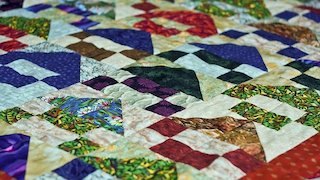Or search by topic
Number and algebra
Geometry and measure
Probability and statistics
Working mathematically
Advanced mathematics
For younger learners
Published 2020 Revised 2023
Maths at Home
You may find it useful to watch this video, created for the Solving Together project, which is filled with top tips for parents on how to work together with children on mathematical games and activities.
Whether you are a parent, a carer, a teacher, or have multiple 'hats', you will find that these Primary and Secondary Features contain a wealth of resources to support learners working mathematically at home. Each feature contains age-appropriate activities which have been grouped in the following ways:
- Just Jottings - to have a go at these activities, you need nothing more than pencil and paper. This is a great opportunity to encourage learners to think about different ways of representing their ideas and recording their findings. When doing mathematics, there is often a phase of 'messy maths' while working on a problem; the neatly written
solutions that appear in maths textbooks only emerge after lots of scribbling, doodling and jotting!
- Interactive Games and Puzzles - these activities all include an online interactive environment, where learners can explore and play, in order to test out ideas and make discoveries. (You can read more about using interactivities to promote curiosity in our article.)
- Maths to Take Your Time Over - these activities are worth exploring over a few days or even a few weeks. Many of them are 'low threshold high ceiling', meaning they are easy to get started on, and they can be extended so may keep someone absorbed for a long time! Learners can keep coming back to the same activity, mulling ideas over in between periods of focused thinking, and recording their ideas and findings, whether independently or with support from you. Some low threshold high ceiling activities are appropriate over a range of ages so could be explored by several members of the family together.
- Print It Out - to get the most out of these activities, you need access to a printer (black and white copies are usually fine).
In addition, the Primary Feature includes:
- Homemade Maths - these activities need some everyday bits and pieces. Anything will do! You can use buttons, scraps of paper or even sweets as counters. Create your own digit cards from paper or card, and use Lego bricks instead of Multilink (interlocking cubes). If you have a printer you can print off number grids, circle templates, dotty grids,
dominoes etc. from the printables page.

The activities in these features will help learners to practise what they have learnt at school and deepen their mathematical understanding. However, this is also a fantastic opportunity for you to support learners in developing their problem-solving and reasoning skills. It doesn't matter if they don't reach a particular end point, or if you are not familiar with the methods they are using. Being able to communicate mathematically is part of being a mathematician, so encourage learners to talk to an adult at home and explain the maths they have been doing.
Many of the activities have a 'Teacher Resources' section (which you can find in the menu to the left of the activity) which although written with a classroom context in mind, may provide useful questions and prompts to ask if learners get stuck at home. Being stuck is to be expected and even welcomed, as it's often when we are getting ourselves unstuck that we make the most progress in our learning, so encourage the learner to tell the story of their thinking so far. Try not to give answers, but praise them for working hard and not giving up, and be clear that mistakes help us learn. You may also find the extension and support ideas given in the Teachers' Resources of each activity helpful.

In these features, rather than publishing Live Problems for learners to submit their solutions, we have published problems that have featured on NRICH before, together with the solutions that were submitted by learners who worked on the activities last time they were featured.
One way of using these solutions is for learners to have a go at the activity for themselves, and then to look at the published solution with a parent or other family member.
Here are some prompts that you could use:
“Is your solution like this one? What's the same? What's different?”
“Could you have worked it out in a different way?”
“Do you understand what they did here, in this solution?”
“Shall we try to work it out together?”
Many of the solutions published on NRICH include pictures of learners' work that have been submitted to us, including diagrams, tables and graphs, so this is another great opportunity to talk about different ways of representing ideas and recording findings. Of course, as always, if a learner comes up with a solution that would be a significant addition to the solution published on the site, we
are happy for you to email us.
If you use Twitter, you can share learners' thoughts and ideas about these activities using the hashtag #nrichmathsAtHome. We are looking forward to reading about the mathematical adventures you have from the comfort of your own living room!

